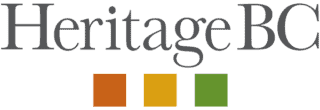- About
- Events & Activities
Events & Activities
- Learning Centre
- Cultural Maps
Cultural Maps
- Mapping Heritage Resources
- Submerged Heritage Resources Map
- Columbia Basin Region Historic Places Map
- Francophone Historic Places Map
- Chinese Canadian Historic Places Map
- Japanese Canadian Historic Places Map
- South Asian Canadian Historic Places Map
- War Monuments and Memorials Map
- Industrial Heritage Cultural Map
- Funding
- News
- Professional Development
Professional Development
- Contact
- Heritage 101
- Advocacy
- Accessibility for Historic Places
- Climate & Sustainability
- Heritage Place Conservation
- Heritage Policy & Legislation
- Homeowners
- Intangible Cultural Heritage
- Non-For-Profit Organizations
- Reconciliation
- Indigenous Cultural Heritage
- Setting the Bar: A Reconciliation Guide for Heritage
- 1. Heritage and Reconciliation Pledge
- 2. Acknowledging Land and People
- 3. Celebrating Days of Recognition and Commemoration
- 4. With a Commitment to Learn
- 5. Committing to Strategic Organizational Diversity
- 6. Mission-Making Room for Reconciliation
- 7. Possession, Interpretation, Repatriation and Cultural Care
- 8. Shared Decision Making
- 9. Statements of Significance and other heritage planning documents
- 10. Heritage Conservation Tools, Local Government Act
- Racism: Do Not Let the Forgetting Prevail
- Taking Action: resources for diversity and inclusion
- Webinars On-Demand
Heritage Conservation Areas: Sample Enabling Bylaw
 With minor alterations, this sample bylaw was prepared by Lidstone, Young, Anderson for Heritage Conservation: A Technical Manual for Local Governments, 1995.)
With minor alterations, this sample bylaw was prepared by Lidstone, Young, Anderson for Heritage Conservation: A Technical Manual for Local Governments, 1995.)
TITLE
- This Bylaw may be cited as “_______”.
AMENDMENT
- Bylaw No. _____, being the Official Community Plan of the _____, is amended by:
a) Deleting sections _______
b) Adding the following text:
“HERITAGE CONSERVATION AREA”
-
- Designation
The area shown outlined in heavy black line on Schedule Eight attached to and forming pan of this Bylaw is designated as a heritage conservation area.
-
- Justification
The area designated in this section was developed with commercial uses in the late 1940s and early 1950s, a period in which land use and development patterns were permitted to evolve almost entirely to serve the needs of automobile transportation. The conservation of the commercial buildings and automobile-related facilities in the area will preserve a regionally unique example of this continentwide phenomenon, including particularly. important examples of commercial architecture and urban design catering to automobile-oriented uses.
-
- Objectives
The objectives of the designation of the heritage conservation area are to ensure that
a) The buildings, structures, land and features listed in Schedule Nine attached to and forming part of this bylaw are neither demolished nor altered or, maintained in any way that is not consistent with their original design, function or appearance, and that
b) Buildings that are constructed in the area are designed, constructed and maintained so as not to detract from the appearance and overall effect of the buildings, structures, land and features listed in Schedule Nine and so as to reinforce the pervasive automobile orientation that was originally established in the area.
-
- Guidelines
Heritage alteration permits authorizing the subdivision of land, or the construction or alteration of buildings or structures, must be issued in accordance with the following guidelines:
[insert architectural guidelines]
-
- Exemptions from Permit Requirements
A heritage alteration permit is not required for
a) the construction of a commercial building on the cast side of _______ Street if the building is separated from the street by a paved automobile parking area accommodating at least one vehicle for every 5 square metres of floor area in the building. and every part of the parking area is clearly visible from the travelled portion of the street;
b) the construction of a commercial building anywhere in the heritage conservation area if the building is designed to be occupied solely by a business providing a service to persons seated in automobiles, including without limiting the generality of the foregoing drive-in restaurants, drive in banks, drive-in laundries, automatic car washes, full service gasoline stations and drive-in-automobile engine oil change services;
c) the use of a site as a drive-in motion picture theatre; or
d) an alteration to a building within the heritage conservation area that does not affect the appearance of the building when viewed from street level at any point on the travelled portion of a fronting or flanking street, and that does not result in a reduction in the number or size of automobile parking spaces provided on the building
-
- Protected Heritage Property
The buildings, structures, land and features listed on Schedule Nine are protected heritage property.
-
- Essential Features and Characteristics
The features or characteristics that contribute to the heritage value and character of the area are the following:
a) provision of automobile parking facilities between the principal building and the street;
b) Absence of landscaping from the site, except for plastic or fibreglass replicas of plant specimens not indigenous to British Columbia;
c) use of signage extending above the roofline of commercial buildings and constructed entirely of plywood or consisting entirely of inflatable replicas of goods sold at retail on the premises; and
d) use of concrete block single-storey construction with tar and gravel roofing, with building surfaces facing the street being either unpainted or painted with primary colours only,” and
c) adding to the Bylaw as Schedules Eight and Nine the map and list of properties attached to this Bylaw as Schedules A and B.
SCHEDULE A: to include Heritage Conservation Area boundaries
SCHEDULE B: to include names, land and features to be included in the HCA designation.
